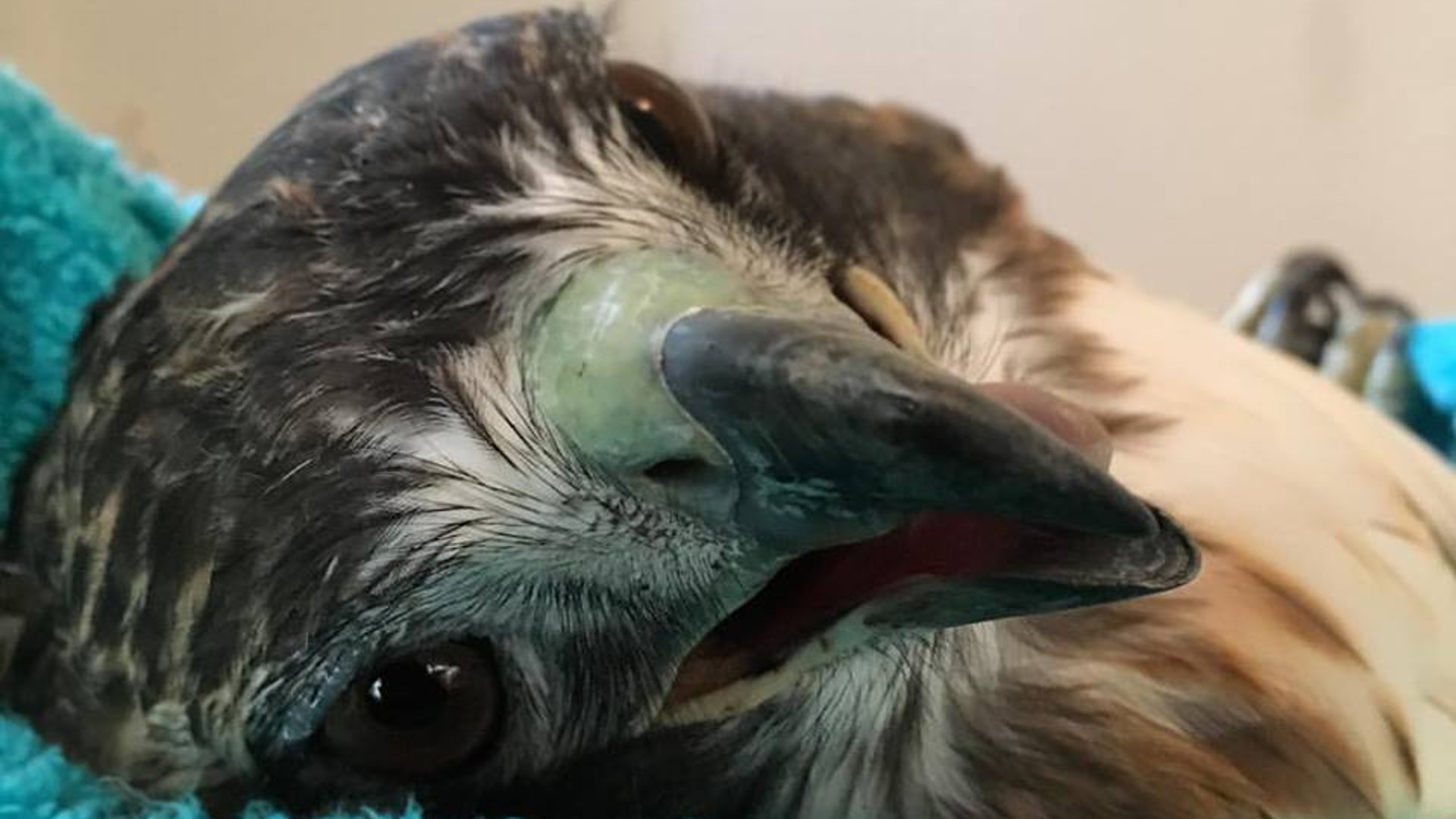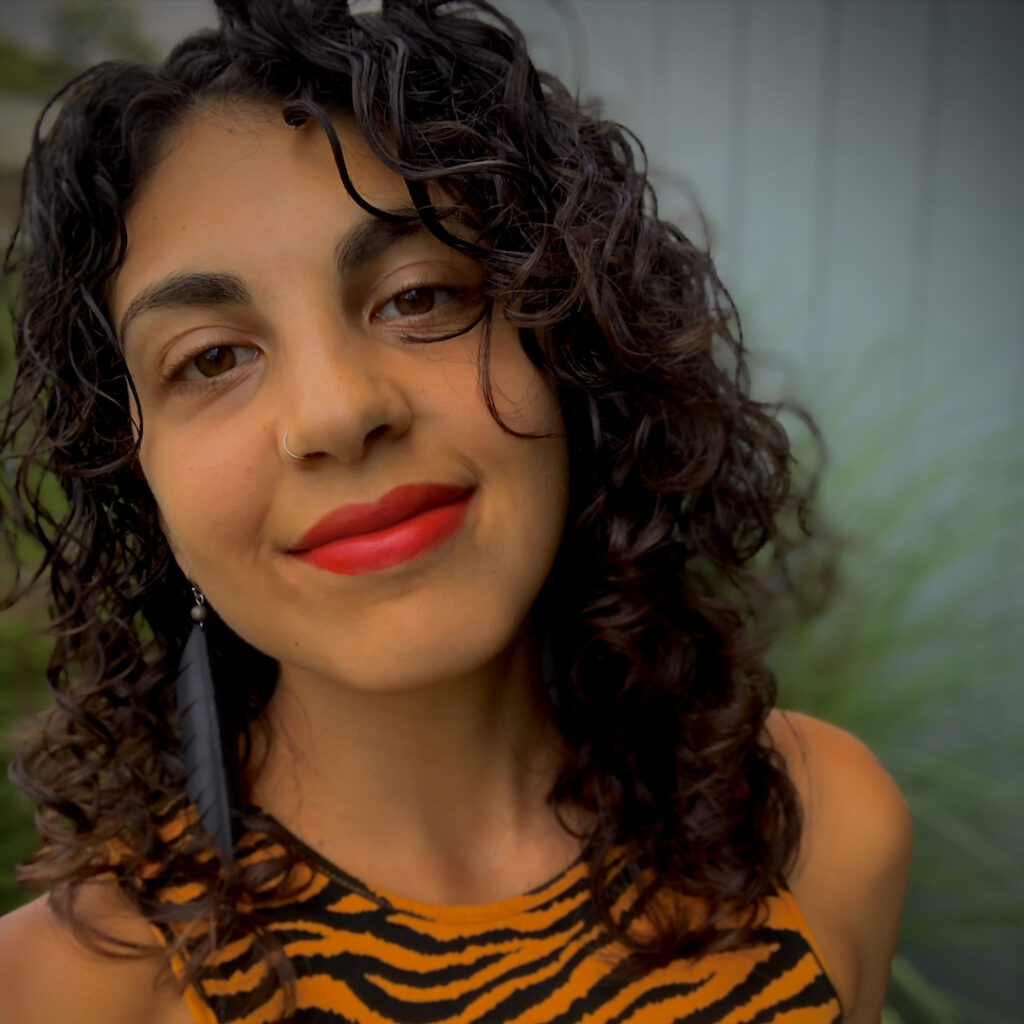It’s Saturday night, and instead of going out into town with friends, I’m sitting in my apartment examining a sick red-tailed hawk. Holding him upright against my body, one hand clasped around his ankles, I unfurl and look closely at each drooping wing, study his glazed eyes with a bright penlight, test his reflexes in his tired feet, look down his gaping beak and feel his protruding keel. I’m looking for signs of illness or injury — broken bones, gunshot wounds, poisoning, entanglement — mostly, harms caused by human behavior.
For as long as I can remember, I’ve had an uncanny finesse understanding and interacting with nonhuman animals. No one taught me how. Looking back it seems it stemmed from curiosity, my desire to know what was going on inside their minds.
As a five-year-old, I’d imagine what it was like to be an animal by acting like one: lapping up water from my glass like a cat or pecking up food off my plate like a bird. I only assumed “animal mode” when I thought no one was looking.
One day I was caught at a swimming lesson literally doing the doggy paddle, fists balled up like paws. Others didn’t think this was as normal as I did. “Erica’s a strong swimmer, but she’d be a lot faster if she opened up her hands,” I overheard an instructor tell my mother. I realized it was probably not acceptable — at least by other people’s standards — to act like an animal, so I stopped. But I continued to think about what it was like to be one.
If I couldn’t be an animal, I decided, I’d work with them. At age seven I started walking dogs. At 15 I was accepted as an animal-care volunteer, and soon after I was hired as a clinic assistant at a wildlife hospital. I worked there for six years.
My job at the clinic was wildlife rehabilitator, a person who cares for sick, injured and orphaned wild animals so they can be released back into the wild. In the beginning I prepared meals: rodents stuffed with vitamins for the raptors and assemblages of fruits, veggies, proteins and mushy dog food for the opossums. I’d also clean cages, mop floors and haul out trash.
Over time, as I devoted more hours to clinical work and applied for my New York State wildlife rehabilitator license, my responsibilities grew. I learned from more experienced colleagues how to dose medications, give first aid to opossums, splint baby bird legs, treat bumblefoot in gulls, syringe-feed baby mammals and take the clinic’s non-releasable hawks for “walks” outside on a falconer’s glove. What started as a summer job morphed into a weekend gig during the school year and later became a full-time job during college.
In my years of reading my wild patients’ charts, there was one thing that’s stood out to me: The fact that most of them were admitted as a result of direct or indirect human activity. Hawks poisoned. Opossums trapped. Turtles crushed by cars. Songbirds that crashed into windows. Baby birds unnecessarily picked up by people. Squirrels orphaned after trees were cut down and nests destroyed. Many animals died, sometimes in my arms or hands as I tried to provide aid. I quickly learned to accept death as a side effect of life — though each individual animal lost stung me.
I learned to recognize every animal beyond its value as part of a species population. Each animal is its own intelligent being. I saw it in my pets at home just as much as I saw it in the clinic. At work, one resident crow would immediately squawk when he saw me, even if I was in a crowd of people. I’d notice how baby squirrel siblings would be quick to nuzzle up with their kin in a crate full of orphans from various squirrel families (I’d keep track of each by dotting their tails with colored magic markers).
It’s not just me thinking this way: scientists have proven individuality and intelligence in crows and squirrels, and have found signs of “higher” — meaning human-like — thinking in plenty of other species. Killer whales have culture and extensive kin groups, and chimpanzees engage in social learning. Scientists say animals are rational thinkers. Yet humans continue exploit, dominate and sometimes exterminate nonhumans.
One day all the death in my workplace caught up with me. It became clear it would be impossible to save each individual animal through rehabilitation alone because humans were in many cases unaware of how their actions were harming wild animals.
So I decided to change course and focus on prevention. I became a science writer. Maybe, I thought, writing about wildlife issues would give people the information they needed to appreciate animals and make informed decisions about their possibly harmful behavior. Maybe this kind of work could avert wildlife from danger. Maybe fewer wild animals would end up dead.
I did not leave wildlife rehabilitation because I think it’s futile. In fact, I think such work is necessary today, since humans have so intensely and irrevocably changed Earth’s ecology. We’ve wiped entire species off the map, destroyed forests and wetlands, built up cities and introduced species to new habitats where they’ve wreaked havoc. The scale of human impact on wildlife is huge: Scientists estimate somewhere between 365 and 988 million birds are killed in building collisions, and outdoor cats kept by humans kill as many as 3.7 billion birds and 20.7 billion small animals annually in the United States. That’s on top of car collisions, poisonings, habitat destruction and other human activities.
Wildlife rehabilitation is certainly not a cost-effective way to help every animal in need. Based on my experiences, out of pocket, it can cost a rehabber anywhere from $50 to hundreds of dollars to save the life of one animal. And it must be acknowledged that, in nature, there are situations where some live and others die, such as when a mother bird gives most of her time and attention tending to her strongest babies and allows the weakest to die. But humans have upset the balance so much that helping those animals in need — no matter what the cause of their illness or injury — may be the right thing to do.
And so while now my focus is prevention, all the while I’ve kept my wildlife rehabilitator’s license. People in my home state of New York call me when they find animals in need of help. Over the years I’ve raised a few baby squirrels and rabbits, rescued trapped owls and carried giant snapping turtles out of the road. Most recently, it was the sick red-tailed hawk. A woman had called me asking for help with the lethargic bird, which was sitting in her driveway. I agreed to come right over.
I pulled up to the woman’s home, got out of my car and slipped a pair of mismatched gardening gloves on my hands, then grasped both a dog crate and towel. The woman and her young daughter ran out of their front door to greet me. They looked relieved.
My eyes quickly found the distressed red-tailed hawk sitting beneath some shrubs. After a short exchange with the woman and her daughter, I slowly approached the bird. He defensively leaned back — talons out, strike-ready. But when I grabbed his ankles with my hands it became apparent he had no strength to pose much danger.
His body was light and flaccid, emaciated and paralyzed. His mouth hung ajar, I thought from stress, until I realized his tongue was sticking out at an askew angle. Something in his brain was causing his body to malfunction — maybe a poison or a virus or a cancer. I looked in his deep brown eyes and decided he had some fight left. I decided to try and save him.
“Thank you so much! You’re a hero!” said the woman as I tucked the crate — hawk inside — into my car and waved goodbye.
According to wildlife rehabilitation experts, encouraging the public to call a wildlife rehabilitator for help when they find a sick, orphaned or injured wild animal — while sometimes harrowing — actually helps connect them to nature in a deep way. “Humans respond with compassion to the immediate and individual, where they may feel overwhelmed by the larger issue and unable to affect change,” says Kai Williams, executive director of the International Wildlife Rehabilitation Council. “These experiences change people, change the way they see wildlife.”
Later that night in my apartment I sat on the edge of my couch with the hawk cradled in my arms, plucking enormous hippoboscid “flat flies” out of his feathers, I thought about what the woman had said about me, and what I really feel are my motivations to rehabilitate wildlife. I don’t think of myself as a hero. Maybe, I thought, I rehabilitate wild animals because I feel like it is just to right humanity’s wrongs. Or maybe I do it to make myself feel a tiny bit better about the things I regret doing — driving a car, flying in planes, eating meat on occasion — that I know harm nonhumans.
I was able to stabilize the hawk overnight and the next day transferred him to a federally licensed clinic, as mandated under my state license. Unfortunately I learned a few days later that the hawk had passed away, despite the clinic’s best efforts.
Maybe rehabbing is my small way of showing that I recognize the lives of all living beings as valuable: human, hawk or otherwise. And I hope that my efforts help others realize why each nonhuman life is worth saving.
© 2017 Erica Cirino. All rights reserved.



The wildlife/human interface is a delicate dance. Thanks to you for your work. A local community is struggling with this issue, http://www.sanluisobispo.com/news/local/article185963153.html